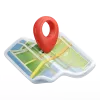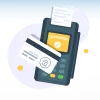20 min read How to Find Clients as a Freelancer-How to Get Your First Client

In the ever-evolving world of freelancing, finding clients is both an art and a science. Whether you’re new to the freelancing game or have been at it for a while, attracting and retaining clients is crucial to your success. This guide will walk you through the strategies and platforms that can help you land your first client and build a steady stream of work.
1. Understanding Your Niche and Target Market
Before you can find clients, you need to know who your clients are. Start by defining your niche and identifying the industries or businesses that need your services. Whether you’re a graphic designer, writer, developer, or marketer, understanding your niche allows you to tailor your services to meet the specific needs of your target market.
- Research Your Niche: Understand the challenges, needs, and goals of your target audience. What problems can you solve for them? What value can you bring to their business?
- Tailor Your Offerings: Customize your services to address the pain points of your target market. Highlight how your skills can help them achieve their goals.
2. Building a Strong Portfolio
Your portfolio is your calling card. It showcases your skills, experience, and the quality of work you can deliver. If you’re just starting, you might not have much to show, but there are ways to build a portfolio even without clients.
- Create Sample Work: Develop projects that showcase your skills, even if they’re not for actual clients. This could be a mock website, a series of blog posts, or a graphic design project.
- Offer Pro Bono Work: Consider offering your services for free or at a discounted rate to local businesses, non-profits, or friends. This not only helps you build your portfolio but also gets your name out there.
- Showcase Testimonials: If you’ve done any work, even small projects, ask your clients for testimonials. Positive feedback can go a long way in building trust with potential clients.
3. Leveraging Freelance Marketplaces
Freelance marketplaces are a great starting point for finding clients, especially if you’re new to freelancing. Platforms like Upwork, Fiverr, and Xp Freelancer connect freelancers with clients looking for specific services.
- Optimize Your Profile: Your profile is the first thing potential clients see. Make sure it’s professional, complete, and highlights your skills and experience.
- Apply Strategically: When applying for jobs, tailor your proposals to the client’s needs. Highlight relevant experience and explain how you can solve their problem.
- Build Relationships: Once you land a client, focus on delivering high-quality work and building a relationship. Satisfied clients are more likely to rehire you and recommend you to others.
4. Networking Online and Offline
Networking is one of the most effective ways to find clients. By building relationships with other professionals, you can tap into their networks and gain referrals.
- Join Online Communities: Participate in forums, social media groups, and online communities related to your niche. Offer advice, share your work, and engage with others. Platforms like LinkedIn are particularly valuable for professional networking.
- Attend Industry Events: Attend conferences, workshops, and meetups in your industry. These events are opportunities to meet potential clients and build relationships in person.
- Follow Up: Don’t let connections fade away. Follow up with the people you meet, stay in touch, and continue to nurture your relationships.
5. Cold Outreach: Making the First Move
Cold outreach involves reaching out to potential clients who haven’t heard of you yet. This can be done through cold emails, social media messages, or even phone calls.
- Research Your Prospects: Before reaching out, research your prospects. Understand their business, challenges, and how your services can benefit them.
- Craft a Personalized Message: Generic messages are easy to ignore. Personalize your outreach by addressing the recipient’s specific needs and explaining how you can help them.
- Follow Up: If you don’t get a response, don’t give up. Send a follow-up message a few days later. Persistence can pay off.
6. Content Marketing: Attracting Clients with Valuable Content
Content marketing is a long-term strategy that involves creating and sharing valuable content to attract and engage your target audience. This can include blog posts, videos, podcasts, and social media updates.
- Start a Blog: Share your expertise through a blog on your website. Write about topics relevant to your niche and showcase your knowledge.
- Create Video Content: Videos are highly engaging and can help you reach a broader audience. Consider creating tutorial videos, case studies, or behind-the-scenes looks at your work.
- Use Social Media: Share your content on social media platforms like LinkedIn, Twitter, and Instagram. Engage with your audience by responding to comments and participating in discussions.
7. Referrals and Word of Mouth: Leveraging Your Network
Referrals are one of the most powerful ways to get clients. When a satisfied client recommends you to someone else, it carries a lot of weight.
- Ask for Referrals: Don’t be afraid to ask your current clients for referrals. If they’re happy with your work, they’ll likely be willing to recommend you to others.
- Offer Incentives: Consider offering a referral bonus or discount to clients who refer new business to you.
- Stay Top of Mind: Regularly check in with past clients and your network. Share updates about your work and let them know you’re available for new projects.
8. Partnering with Agencies or Other Freelancers
Partnering with agencies or other freelancers can be a great way to find clients, especially if you’re just starting out.
- Collaborate with Agencies: Many agencies outsource work to freelancers. Reach out to agencies that align with your niche and offer your services.
- Partner with Other Freelancers: Team up with other freelancers who offer complementary services. For example, if you’re a web designer, you could partner with a copywriter or a developer.
- Offer White Label Services: Some businesses prefer to offer services under their own brand. Offering white label services allows you to work behind the scenes while the agency or business takes the credit.
9. Building a Strong Online Presence
A strong online presence makes it easier for clients to find you. This includes having a professional website, active social media profiles, and a consistent brand.
- Create a Professional Website: Your website is your digital storefront. It should showcase your portfolio, services, and contact information. Make sure it’s easy to navigate and visually appealing.
- Optimize for Search Engines: Use SEO techniques to make your website more visible in search engine results. This can help potential clients find you when they search for services you offer.
- Be Active on Social Media: Choose social media platforms where your target audience is active. Post regularly, engage with your followers, and share your work.
10. Staying Persistent and Patient
Finding clients as a freelancer takes time and effort. It’s important to stay persistent, even when things are slow.
- Set Goals: Set realistic goals for finding clients and track your progress. This will help you stay motivated and focused.
- Keep Improving: Continuously improve your skills and stay updated with industry trends. The more value you can offer, the more attractive you’ll be to potential clients.
- Don’t Get Discouraged: Rejections and slow periods are part of the freelancing journey. Learn from each experience and keep moving forward.
10 FAQs on Finding Clients as a Freelancer
How do I get my first client as a freelancer?
- Start by building a portfolio, offering pro bono work, and networking. Freelance marketplaces like Xp Freelancer can also help you find your first client.
What are the best platforms to find freelance clients?
- Popular platforms include Upwork, Fiverr, and Xp Freelancer. These marketplaces connect freelancers with clients looking for specific services.
How can I use social media to find clients?
- Use social media to showcase your work, join relevant groups, and engage with your target audience. LinkedIn is particularly effective for professional networking.
What should I include in my freelance portfolio?
- Include examples of your best work, case studies, and testimonials from clients. If you’re just starting, create sample projects to showcase your skills.
How do I price my freelance services?
- Research industry rates and consider your experience level. Start with competitive rates and adjust as you gain more experience and clients.
Is it worth offering free work to get clients?
- Offering free or discounted work can help you build your portfolio and gain experience. However, be strategic and ensure it leads to valuable connections or testimonials.
How do I handle client rejections?
- Don’t take rejections personally. Use them as learning experiences to improve your proposals, communication, and skills.
How can I keep clients coming back?
- Deliver high-quality work, meet deadlines, and communicate effectively. Building strong relationships with your clients increases the chances of repeat business.
What’s the best way to follow up with potential clients?
- Send a polite follow-up email a few days after your initial contact. Reiterate your interest in working with them and address any questions or concerns they may have.
How do I scale my freelance business?
As you gain more clients, consider outsourcing tasks, increasing your rates, and expanding your services. Building a team can also help you take on larger projects.
Finding clients as a freelancer is a journey that requires persistence, strategy, and continuous learning. By leveraging the tips and strategies outlined in this guide, you’ll be well on your way to building a successful freelance business. Whether you’re just starting or looking to expand your client base, remember that every step you take brings you closer to achieving your freelancing goals , so stay focused and keep pushing forward.
In summary, the path to finding clients as a freelancer is a mix of preparation, strategy, and consistent effort. By understanding your niche, building a strong portfolio, and utilizing platforms like Xp Freelancer, you can increase your chances of attracting and retaining clients. Networking, content marketing, and referrals further enhance your reach, while patience and persistence ensure you stay on track during slow periods.
The journey may not always be easy, but with the right approach and mindset, you can build a thriving freelance business. As you gain experience, you'll find that landing clients becomes more intuitive, and your reputation will continue to grow. Remember, every successful freelancer started where you are now, so keep moving forward, and soon enough, you'll be looking back at your progress with pride.






































































